So, There is this schematic that a previous collegue made for a project that I took over that have some EMC problems (Burst/EFT). The problem is that 12V on the secondary side of the transformer(not shown i picture. off to the right). The voltage drops when burst test is being done.
Is this Gas Discharge Tube (PN 2051-09-SM-RPLF) correctly mounted?(marked with red arrow).. Should it not go from Line to GND instead of over the "choke"? Is there any reason why one would connect it like this "over" the choke? Or have he done a misstake?
Also, (since I am anyway asking you for help) any tip for improvement I could try to pass the burst test?.. Any help would be appreciated.
